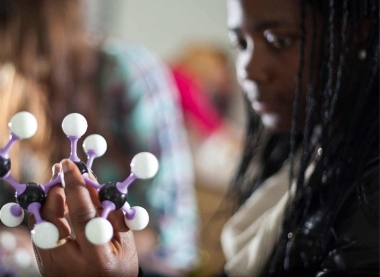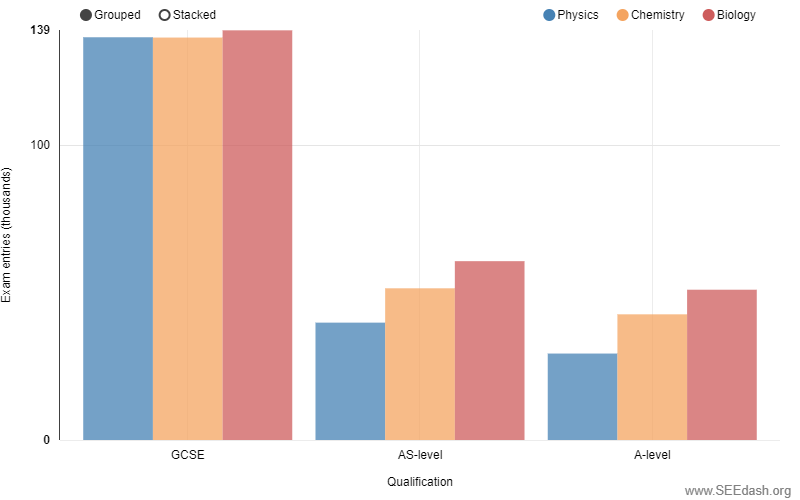Education
Latest
New STEM education database launched
A new Science and Engineering in Education data dashboard called SEEdash has been launched today (12 October), to provide new insights and ways of visualising STEM education qualification data to journalists and educators.

Gatsby has worked with colleagues from the Institute of Physics and the Royal Academy of Engineering, to collaborate with SchoolDash to develop the SEEDash tool. It complements the successful SchoolDash online education data resource. SEEdash is focussed predominantly on STEM data for schools in England but also includes information on non-STEM subjects for comparison.
SEEdash uncovers correlations in data about STEM uptake, attainment and progression, allowing immediate comparison and overlay of data sets for different subjects and subject combinations, student characteristics, cohorts, geographical regions and school types between 2002 and 2016.
The new dashboard can enable rapid comparisons that were previously far more difficult to make, such as looking at the reasons behind the fall in numbers of students progressing from GCSE to A level Physics. Physics shows more attrition than Chemistry and (especially) Biology when students move from Key Stage 4 to 5:

SchoolDash founder Dr Timo Hannay says: "SEEdash is a unique new tool that provides a quick and intuitive way to interrogate exam entry and results data by qualification, subject, school type, pupil type and geography. It will increase transparency, help to inform debates and avoid duplication of effort among analysts."
Daniel Sandford Smith, Director of Science and Engineering Education at the Gatsby Foundation says: "The work of Gatsby and others who seek to address fundamental issues in STEM education - from gender disparity, to attainment in particular areas of the country - relies on the ability to unpick the data behind the headline numbers. SEEDash will be a vital tool for us in Gatsby and we hope that others will also find it useful in their work to improve the STEM outcomes of young people."
Charles Tracy, Head of Education at the Institute of Physics, says: “Seedash allows anyone to interrogate the data quickly and visually. We are already finding surprising results and new patterns that are informing our policy and activity."
Dr Rhys Morgan, Director of Engineering and Education at the Royal Academy of Engineering, says: "SEEdash brings together a whole raft of interesting data that will help us to see where the gaps in our provision lie and assess more rigorously whether our ongoing work to build engineering skills for the future is really enabling social mobility and creating a more diverse and inclusive engineering workforce."

